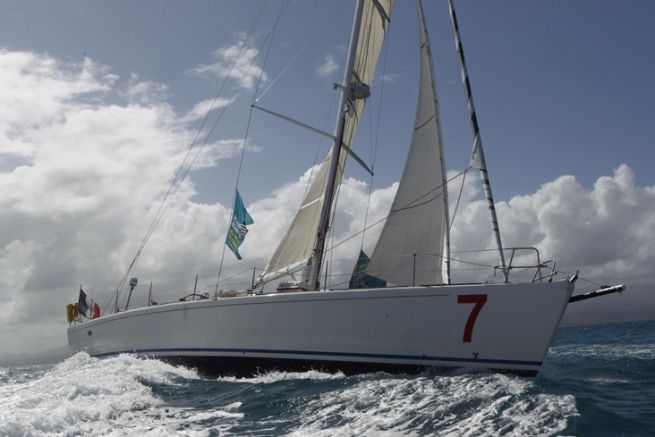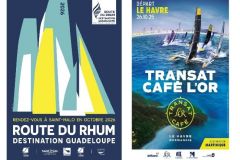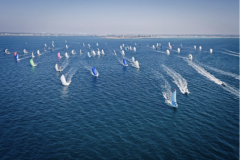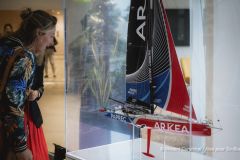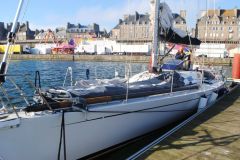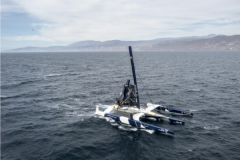Monohulls and multihulls that don't fit in the other classes
The Rhum Mono class includes monohulls up to 39 feet in size that have not obtained a Class 40 or IMOCA measurement certificate since 2011. The Rhum Multi class includes multihulls whose size is between 35 and 65 feet and which do not belong to the Ocean Fifty rule since 2015.
A class for "enlightened" amateurs
While they should convey the "original" spirit of the Route du Rhum, these open classes are also an opportunity for amateurs to participate in one of the greatest ocean races. But who can really participate in a Route du Rhum in this category?
"It is the goal of the Rhum class to be open to amateurs. You can find them in Rhum Multi, Rhum mono but also in Class40. This is not the case for the other classes. Nevertheless, these are enlightened amateurs, capable of racing a transatlantic race in November in sometimes difficult conditions. If you have a well thought-out project, if you train regularly, there is no difficulty in entering these two classes" says Francis Le Goff, race director of the Route du Rhum destination Guadeloupe 2022.

A growing craze
But the number of elected is much less than the number of volunteers-euros! For the classes Rhum euros Mono and Multi euros 12 places are allocated to each by the race organization.
"In March 2022, we have 26 requests in Rhum Multi and 19 in Rhum Mono. There are more requests than possibilities. A year ago, at the end of March 2021, we suspected that there would be a craze for these classes. We published a note to guide the skippers who wanted to race the Route du Rhum and avoid surprises in terms of time and money. We wanted to reinforce the sporting aspect of these two classes and respect the philosophy of these classes by favoring boats that have raced the Rhum in the past. We pay particular attention to the boats or skippers who have finished or won the Route du Rhum. This avoids having boats that are too slow, because it's hard to keep a village open for too long." develops Francis Le Goff.
In these two classes, we find mostly old racing boats, but also TS42s, fast boats with the ability to cross quickly. And it's the same for the monohulls.
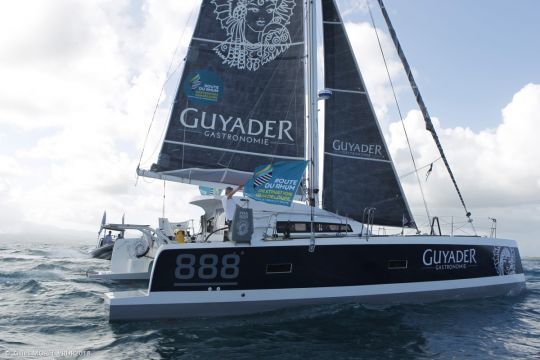
Favouring the sailors who sail the most
To promote training, the race organization encouraged participants to sail as much as possible.
"We will take into account the races and regattas done between March 31, 2020 and March 31, 2021. These skippers will be rewarded. We take into account the rating, the time people have spent racing, if they have participated in a Route du Rhum and finished it, if they have submitted their file very early. We will unveil the list of participants before April 4, 2022."
A qualifying course in the race
To be able to participate in the Route du Rhum destination Guadeloupe, it is necessary to have sailed a certain number of miles in races in the Route du Rhum configuration, either single-handed or double-handed (coefficient 1) or with a crew (coefficient 0.5) on the boat that will participate in the race. If for some classes, this qualification is easy in view of the class program, for the Rhum classes, it is a little more complex. Moreover, an additional qualification course, out of race or in race is required.
"I encourage the skippers to do this qualification during the race. It creates an emulation between them. They don't choose the weather at the start or finish, whereas outside the race, you can choose a favorable weather window. When you are sailing against an opponent, the competition is more fierce. You can see the reliability of the projects better in a race than on a qualifying course outside the race. For the Rhum classes, there was the Dhream Cup, the Arc, or the Cap Martinique" concludes Francis Le Goff.
In addition to this qualification, participants must pay an entry fee of 6,500 euros (excluding VAT), a considerable budget, but much less than for an Ultime (80 euros,000 euros) or an IMOCA (25 euros,000 euros).
